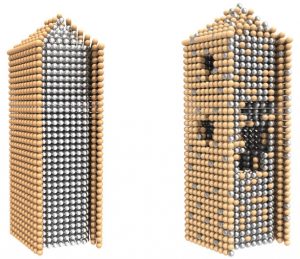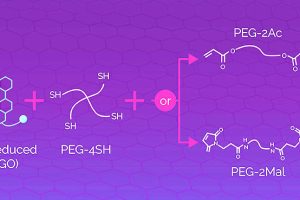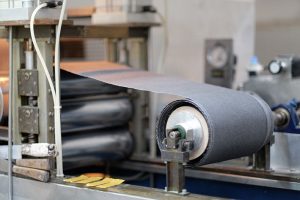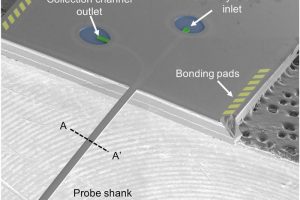
They are flexible and the most conductive of the metallic nano-wires, according to the Terasaki Institute in Los Angeles, although they are prone to corrosion.
“Silver nanowires have been employed as electrodes in various electronic devices, however, their commercial usage has been hampered by their vulnerability to the corrosive effects of heat, light, and moisture,” said the Institute. “Such corrosion can result in pits and holes or etching on the nanowire surface. Etching can be highly detrimental to silver nanowire-based device performance and can even lead to their failure.”
As the lattice spacing is almost the same as silver’s, gold plating can effectively protect the surface with an intimately bonded gold surface, except that certain gold ions (Au+ or Au3+) attach in a odd way that leaves pores in the surface.
A trick that the researchers discovered was to first complex the gold with SO32– ions, after which they lay down in even pore-free coatings. After which they created a straight-forward solution-based room-temperature method for implementing the whole process.
The resultant silver nanowires have stable pore-free 3nm gold coatings.
“We considered every possible challenge in designing an effective method to increase longevity of silver nanowire-based devices,” claimed researcher Dr Yangzhi Zhu. “Our data clearly shows that we were able to create effective solutions to these challenges.”
When nanowires were exposed to air, according to the institute, uncoated silver nanowires were damaged after ten days while their gold-coated cousins were unchanged even after six months. “Similar results were obtained after both nanowires were exposed to the damaging effects of hydrogen peroxide and sodium-buffered saline submersions.” In flexible transparent electrodes exposed to heat and humidity “the non-coated nanowires failed after 12 days, but the gold-coated silver nanowires’ performance was comparable to top-performing commercial nanowires.”
That is not to say the gold-plated wires survive indefinitely in all circumstances, but they last a lot longer that un-coated wires.
To learn more, read ‘Ultrathin-shell epitaxial Ag@Au core-shell nanowires for high-performance and chemically-stable electronic, optical, and mechanical devices‘, published by SpringerLink. The full paper can be downloaded without payment from the link.
 Electronics Weekly Electronics Design & Components Tech News
Electronics Weekly Electronics Design & Components Tech News



